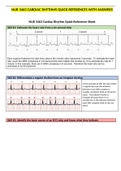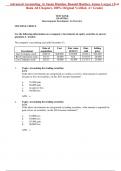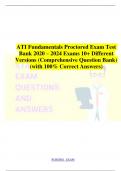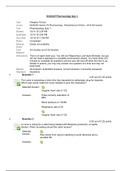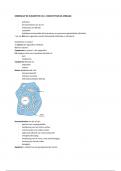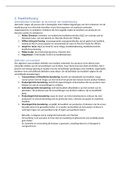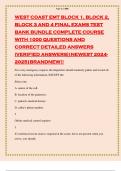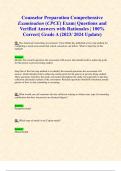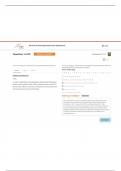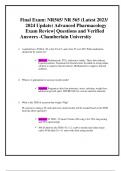Exam (elaborations)
NUR 3463 CARDIAC RHYTHMS QUICK REFERENCES WITH ANSWERS / NUR3463 CARDIAC RHYTHMS QUICK REFERENCES WITH ANSWERS (LATEST 2021) | RASMUSSEN COLLEGE
- Course
- Institution
NUR 3463 CARDIAC RHYTHMS QUICK REFERENCES WITH ANSWERS / NUR3463 CARDIAC RHYTHMS QUICK REFERENCES WITH ANSWERS (LATEST 2021) | RASMUSSEN COLLEGE
[Show more]
